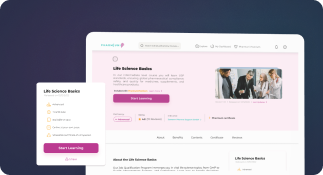CSV to CSA Transition
Definition
The CSV to CSA transition refers to the shift from traditional Computer System Validation (CSV) practices to the FDA’s modernized Computer Software Assurance (CSA) approach. CSA is a risk-based methodology introduced by the U.S. Food and Drug Administration (FDA) to streamline validation of software used in regulated environments, particularly in the life sciences and pharmaceutical industries.
While CSV emphasizes comprehensive documentation and testing of all software functions, CSA focuses on critical thinking, risk assessment, and assurance activities that add value and ensure patient safety and product quality.
Detailed Explanation
Background: What is CSV?
Computer System Validation (CSV) is a regulatory requirement under FDA 21 CFR Part 11 and EU Annex 11, ensuring that software systems used in GxP (Good Practice) environments perform as intended. CSV requires exhaustive documentation, including validation plans, test protocols, traceability matrices, and final reports.
While effective in ensuring compliance, traditional CSV methods have been criticized for being overly burdensome, leading to a “check-the-box” mentality that prioritizes documentation over true quality assurance.
What is CSA?
Computer Software Assurance (CSA) is an FDA initiative aimed at modernizing the approach to software validation. Released in draft guidance in 2022, CSA promotes a more agile, risk-based approach that emphasizes system functionality, critical thinking, and testing only where it matters most.
Rather than validating every feature, CSA encourages focusing on software functions that impact patient safety, product quality, and data integrity. It also supports the use of automated testing and vendor documentation to reduce redundant efforts.
Key Differences: CSA vs CSV
- Risk-Based Focus: CSA prioritizes validation based on risk to patient safety and product quality, while CSV treats all functions equally.
- Critical Thinking: CSA encourages teams to use scientific rationale to determine what needs validation, whereas CSV relies heavily on prescriptive documentation.
- Testing Approach: CSA supports unscripted, exploratory, and automated testing methods. CSV typically requires formal, scripted tests.
- Documentation: CSA reduces unnecessary documentation, focusing on what is needed to ensure assurance. CSV often results in excessive paperwork.
Why the Shift from CSV to CSA Matters
The pharmaceutical and life sciences industries are increasingly adopting digital technologies, including cloud-based platforms, artificial intelligence, and IoT devices. Traditional CSV methods are not well-suited to keep pace with these innovations. The CSA approach, by contrast, supports faster implementation and validation of new technologies without compromising compliance.
Benefits of transitioning to CSA include:
- Faster software implementation and updates
- Reduced validation costs
- Improved compliance through meaningful testing
- Encouragement of innovation and digital transformation
Practical Example of CSA Implementation
Consider a pharmaceutical company implementing a new manufacturing execution system (MES). Under CSV, every function—whether critical or not—would require scripted validation. Under CSA, the company can identify high-risk features (e.g., batch record generation) and focus validation efforts there, using exploratory testing and vendor documentation for low-risk features (e.g., user interface customization).
How to Transition from CSV to CSA
Organizations looking to adopt CSA should:
- Train teams on CSA principles and critical thinking
- Update internal procedures to reflect CSA methodology
- Engage quality and regulatory teams early in the transition
- Leverage vendor documentation and automated testing tools
- Document rationale for risk-based decisions
CSA and FDA Guidance
The FDA’s draft guidance titled “Computer Software Assurance for Production and Quality System Software” outlines the principles of CSA. It clarifies that the FDA supports risk-based approaches and does not expect exhaustive documentation for low-risk software functions. This guidance is part of the FDA’s Case for Quality initiative, aiming to improve product quality through smarter regulatory practices.



